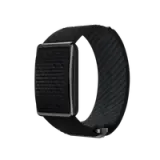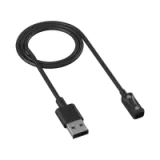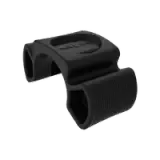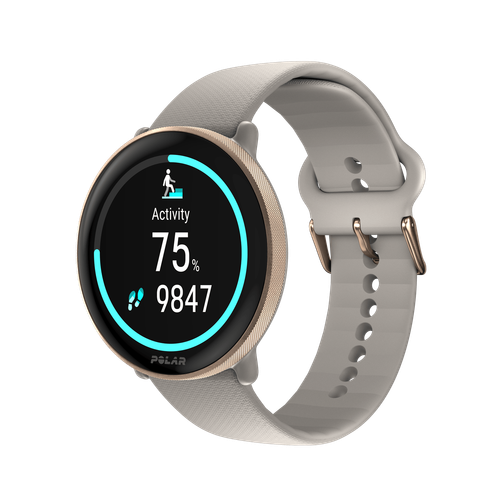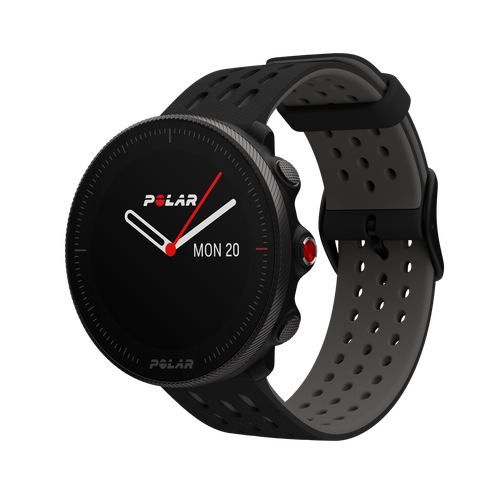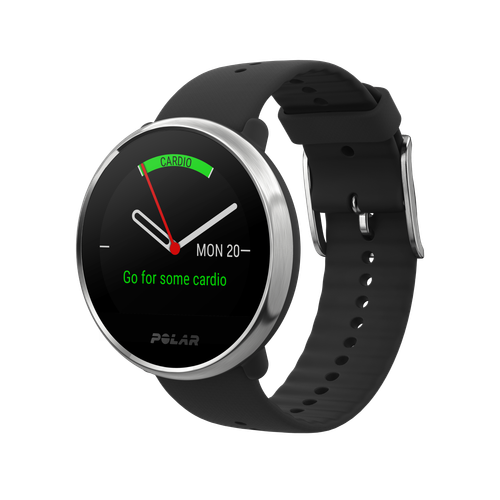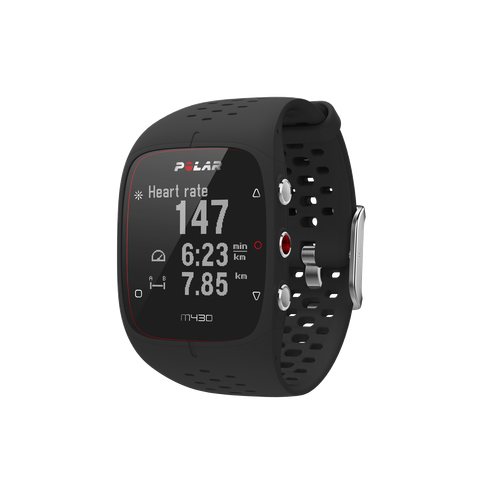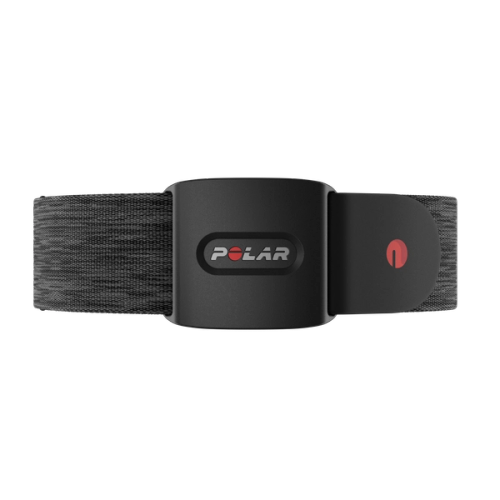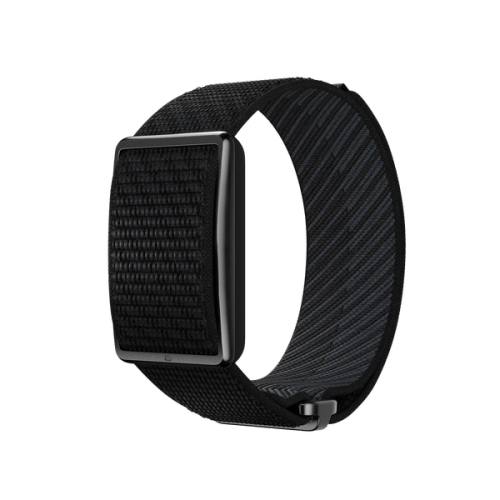Every time you step into the gym, you aren't just lifting weights; you're conducting a complex, real-time experiment in human performance. For decades, athletes and coaches have searched for the definitive recipe for muscle growth, relying on intuition, tradition, and occasionally, pure guesswork. Should you lift heavy and fast, or light and slow? Does grinding out a rep for twenty seconds unlock secret gains, or is that just wasted time?
The answers lie not in the chalk dust or the mirror, but in the intricate dance between your nervous system and your muscle fibers. Each repetition—from the moment you initiate the lift to the instant you complete the descent—is a micro-experiment in mechanics and neurology. What happens in those few seconds dictates whether your body receives the optimal signal for strength and size.
Here we'll break down the science of resistance training, moving past the common gym floor dogma to understand the true drivers of adaptation. We'll explore the foundational mechanisms, dissect the latest research on training variables, and ultimately provide a clear, evidence-based roadmap for executing the perfect hypertrophy repetition. Get ready to turn your gym time into an applied science lab.
What is a Rep?
Understanding a simple rep—that foundational unit of your workout—on a deeper, scientific level is the key to maximizing your gains. It's not just up and down; it's a carefully orchestrated sequence of muscle actions.
Essentially, when you lift, you're commanding your muscles to perform three distinct types of contractions within a single rep. By mastering these phases—the Eccentric, Isometric, Concentric, and the transitional moments between them—you unlock a powerful understanding of mechanical tension and muscle growth.
The Eccentric Phase: The Brake and the Growth Engine
This phase is the controlled lowering portion of the lift—for example, lowering the barbell to your chest during a bench press.
The Science: This is where your muscle is actively lengthening under tension, which generates the most significant amount of mechanical tension and is the primary driver of muscle hypertrophy (growth). You are literally stressing the muscle fibers as they lengthen, signaling them to repair and grow stronger. Therefore, you must not rush this phase.
Component Behavior:
- Muscle Fibers: Your fibers are the strongest during this phase. Studies show that muscles can produce more force eccentrically than concentrically, yet this is achieved with less energy expenditure. This occurs because the resistance actually helps 'break' some of the cross-bridges (the connections between the muscle filaments, actin and myosin), requiring less effort to detach them. This high force/low energy cost is a potent signal for hypertrophy and the development of muscle fiber length (or fascicle length), which is correlated with increased speed and flexibility.
- Tendons: The tendon acts as a spring, being stretched and storing elastic energy. This phase imposes the highest tensile (stretching) load on the tendon. To adapt, research indicates that eccentric training increases tendon stiffness (its ability to resist stretch), making it more effective at absorbing force and less prone to injury.
- Joints: Due to the higher forces and the need to decelerate the weight, the eccentric phase demands maximum effort from the stabilizer muscles (like the smaller muscles of the shoulder, hip, and core). This phase effectively trains joint control, as the body fights to maintain proper alignment under stress.
undefined

Polar H10
Heart Rate Sensor
When it comes to accuracy and connectivity, Polar H10 heart rate sensor is the go-to choice. Monitor your heart rate with maximum precision and connect your heart rate to a great variety of training devices with Bluetooth® and ANT+.
The Isometric Phase: The Stabilizing Pause
This phase occurs at the transition points where your muscle is under tension, but its length does not change. An example is holding the barbell steady right before you press it up at the bottom of a bench press.
The Science: The pause is vital for stability and helps ensure the subsequent concentric phase is performed correctly by eliminating momentum. A moment of isometric contraction at the point of maximum stretch is an excellent technique for increasing time under tension and ensuring your muscles do all the work.
Component Behavior:
- Muscle Fibers: This phase is critical for motor unit recruitment. If you hold a challenging weight, you must recruit a high percentage of your available motor units to sustain the tension. Studies have confirmed that training with maximal or near-maximal isometric contractions can produce significant strength gains at the specific joint angle trained.
- Joints: The hold-and-pause at the bottom of a lift is arguably the best way to train joint stability at its most vulnerable angles. By eliminating momentum, you force the surrounding muscles into a co-contraction (where muscles on opposite sides of the joint fire simultaneously) to create a rigid, protective force around the joint. This is a powerful, low-impact way to improve joint health.
- Structural Integrity: Beyond movement, specific protocols, such as heavy slow resistance (HSR) training, which includes high-force isometric holds, have been shown to be effective in improving the structural integrity of the tendon, offering a therapeutic benefit for conditions like tendinopathy.
The Concentric Phase: The Lift and the Power Surge
This is the most familiar phase: your muscle is actively shortening under tension to overcome the resistance, such as pushing the barbell away from your chest.
The Science: This is your force-production phase, critical for developing maximal strength and power. For explosive movements, you drive through this phase as hard and fast as possible. For hypertrophy, the aim is to execute this phase with a consistent, controlled tempo while maintaining maximal effort.
Component Behavior:
- Muscle Fibers: Force production during this phase follows the well-known force-velocity relationship. The faster you try to lift a weight, the lower the maximum force your muscle fibers can produce. To maximize strength, you must overcome the load relatively slowly. To maximize power, you prioritize speed over absolute load.
- Tendons: The tendon rapidly releases its stored energy, which powerfully augments the muscle's force production. This is the stretch-shortening cycle in action—the faster the transition from eccentric to concentric, the more energy is released, which is key for athletic movements like jumping and sprinting.
The Transition Moments: Smooth and Controlled
Between all the major phases are the split-second points where the muscle action shifts.
- Bottom Transition: The switch from the eccentric (lowering) to the concentric (lifting). Pausing here eliminates the stretch-shortening cycle (the sense of bounce or momentum) that can reduce muscular tension, making the subsequent concentric phase harder and more effective for pure strength building.
- Top Transition: The brief moment at the peak of the lift before you start the eccentric (lowering) again.
- Transitional Research: A significant finding in recent biomechanical research on the Stretch-Shortening Cycle (SSC) is the importance of smooth transitions between the phases. A rapid, uncontrolled transition (a 'crash' at the bottom of a squat, for example) increases the sheer forces on the joint and connective tissues, increasing injury risk and bypassing the beneficial tension-storage mechanisms of the tendon.
In short, if you want bigger muscles, slow down the Eccentric. For a powerful lift-off and resilient tendons, utilize the rapid Concentric and focus on the transition. And if you want to bulletproof your joints, nail that Isometric pause.

From Intent to Iron: Reps and your Central Command
Every rep, every push, every controlled descent—it all begins with a thought. Long before a barbell moves an inch, your Central Nervous System (CNS) is the mastermind, translating your intention to lift a weight into a sophisticated cascade of electrical signals. Here is the journey that takes that thought and makes it action.
The Cortical Control Room: Primary Motor Cortex (M1)
The genesis of voluntary movement, including a resistance training repetition, is mainly housed in the Primary Motor Cortex (M1) of your brain. M1 is the final cortical area responsible for sending the actual command to the muscles.
- Preparation and Planning: Movement doesn't start in M1 alone. Areas such as the Supplementary Motor Area (SMA) and Premotor Cortex (PMC) become active during the planning phase, particularly for complex or intense movements, like resistance exercises. Recent fNIRS (functional near-infrared spectroscopy) studies, which can measure brain activity during movement, have shown that resistance exercise activates the PMC and other motor areas more extensively than simple movements, highlighting their crucial role in managing the higher load and coordination demand of a heavy lift.
- The 'Voluntary Drive': Once the plan is set, the M1 generates the descending motor command—the voluntary drive that travels down the spinal cord. This command determines which muscles to recruit, the number of motor units to activate, and the frequency at which to activate them. The entire corticospinal pathway's excitability—how easily it can fire a signal—is often enhanced by resistance training, which is one of the neural adaptations that accounts for early strength gains before changes in muscle mass occur.
The Journey to the Fiber: Corticospinal Tract
The motor command leaves M1 and descends through the corticospinal tract, the main pathway for voluntary movement. This path acts like a high-speed data cable, transmitting the signal to the spinal cord.
- Recruitment at the Spinal Level: The descending signal ultimately synapses with alpha motor neurons in the spinal cord. These motor neurons are the last link in the chain—they are the final common pathway for all neural input to the muscle.
- The Size Principle: To match the force requirement of the lift, the CNS adheres to the Size Principle. This means that smaller, more easily excitable motor units (which control smaller, fatigue-resistant muscle fibers) are recruited first. As the load increases (for example, in a heavy squat), larger and larger motor units are recruited, which control the powerful, fast-twitch muscle fibers. A higher-intensity resistance movement demands a greater and faster rate of motor unit recruitment, a neural adaptation that improves with training.
- Concentric vs. Eccentric Control: Interestingly, the brain's strategy for controlling the concentric (lifting/shortening) phase versus the eccentric (lowering/lengthening) phase is different. Studies have shown that eccentric contractions are associated with significantly stronger activation of the motor control network (M1 and other cortical areas) compared to concentric contractions, even though the muscle's electrical activity (EMG) might be lower. This suggests the CNS requires greater effort and coordination, likely involving unique neural strategies at both supraspinal and spinal levels, to control and stabilize the lengthening muscle against a heavy load.
Triggering Contraction: The Neuromuscular Junction
The alpha motor neuron's axon finally reaches the muscle fiber at the neuromuscular junction, where the electrical signal is converted to a chemical one.
- Chemical Signal: The nerve impulse releases the neurotransmitter acetylcholine into the synaptic cleft.
- Fiber Activation: Acetylcholine binds to receptors on the muscle fiber's membrane, triggering an electrical impulse that spreads across the muscle fiber. This impulse causes the release of calcium ions (Ca2+) from the sarcoplasmic reticulum inside the muscle cell.
- Cross-Bridge Cycling: The Ca2+ binds to regulatory proteins on the actin filaments, allowing the myosin heads to bind to actin and initiate the cross-bridge cycle. This is the mechanical event of the contraction—myosin heads pull on the actin filaments, shortening the sarcomeres (the fundamental contractile units) and generating the force required to move the weight.
In essence, the motor cortex provides the neural drive—the voluntary, high-frequency command—that is perfectly modulated by the rest of the CNS to achieve the precise force, speed, and coordination needed to move the weight, making the brain the true engine of every workout.
undefined

Polar Grit X2
Outdoor Watch
Polar Grit X2 is a compact, robust outdoor watch crafted for big adventures and everyday performance. With advanced training tools, sapphire glass AMOLED display, and precision navigation with full-color maps, it’s built for life on and off the trails.
Time Under Tension vs. Mechanical Tension
While early strength training studies (like Moritani & deVries) focused on the initial neural drive, modern research has shifted its focus to the mechanism by which the muscle itself adapts. This has led to a significant discussion pitting Time Under Tension (TUT) against Mechanical Tension.
Time Under Tension (TUT)
TUT refers to the total duration a muscle is held under load during a set.
- TUT Advocates traditionally recommended moderate loads (e.g., 60–85% 1RM) and slow, controlled repetitions (3–6 second eccentric phases) to prolong the exposure to stress, which theoretically increases metabolic stress and muscle damage—two classic proposed drivers of hypertrophy.
- The Theory: Longer sets (e.g., 40–70 seconds) accumulate metabolites (like lactate) and restrict blood flow, creating a hypoxic (low-oxygen) environment that is hypothesized to amplify the muscle-building signal.
- Gym Example: If you are performing biceps curls and take five seconds for every rep, you are maximizing TUT. However, if you stop 10 reps short of failure, the high TUT won't compensate for the lack of maximum fiber recruitment.
Mechanical Tension
Recent research, however, increasingly emphasizes Mechanical Tension as the single most critical stimulus for muscle hypertrophy.
Mechanical Tension is the total force or strain placed on the muscle fibers and their signaling proteins. It is maximized when the muscle is:
- Under high load (heavy weight).
- Near failure (maximum fiber recruitment).
- At long muscle lengths (stretching under load).
The Concept of Muscular Failure
It’s important to note that the key concept that unites all paths to high mechanical tension—whether you use a heavy weight or a moderate one—is muscular failure.
Muscular failure is defined as the point within a set where you can no longer complete another repetition using proper form. This point is critical because it ensures you have achieved maximal motor unit recruitment.
When the easily-activated, low-threshold muscle fibers fatigue, the nervous system is forced to recruit the remaining, powerful, high-threshold motor units to continue the effort. By training close to or at this failure point, you guarantee that every available muscle fiber, including the fast-twitch fibers with the most significant growth potential, has been placed under the high strain necessary to trigger a robust hypertrophic signal.
Gym Example: When performing squats with a heavy weight, you might hit failure after only five reps. That fifth rep generates maximal mechanical tension because your body is forced to recruit every available muscle fiber just to move the load.
Recent Research Refutes TUT as an Independent Driver
The idea that simply slowing down a rep to increase TUT is superior for growth has been challenged by several recent, well-controlled studies:
- Volume-Equated Studies: Research consistently shows that when total volume-load (weight × reps × sets) is equalized, a slow-tempo, high-TUT protocol (e.g., 6 seconds per rep) does not produce significantly greater muscle growth than a normal-tempo protocol (e.g., 2 seconds per rep) (Schoenfeld et al., 2015).
- Focus on Maximum Recruitment: The crucial 'tension' appears not to be time, but the moment of maximum fiber recruitment. Whether a light weight (low mechanical tension) is lifted slowly or quickly, it only achieves maximum fiber recruitment and high mechanical tension at or near muscular failure. A heavier weight (high mechanical tension) achieves this recruitment much earlier in the set.
- Length-Mediated Tension: The most relevant recent finding has centered on length-mediated mechanical tension. Studies, particularly a 2021 meta-analysis by Kassiano et al., have strongly suggested that exercises that train a muscle in a stretched position (e.g., a deep squat or fly) yield superior hypertrophy outcomes compared to training the muscle in a shortened position, regardless of TUT. This outcome suggests that the tension placed on the muscle at its maximal length is a potent, independent driver of growth.
In summary, current scientific consensus views Mechanical Tension, which can be created with heavy loads or moderate loads taken to failure, as the primary mechanism. In contrast, TUT is merely an outcome of lifting a moderate-load set close to muscular failure.
Tempo Matters: Slow or Fast?
Building directly on the understanding that Mechanical Tension—not TUT—is the key driver, the debate naturally evolves to the optimal Tempo (repetition speed) for achieving that tension, especially when sets are taken to failure. This is where the practical application of lifting speed is considered, focusing on intent versus actual movement velocity.
The Concentric Phase: Intent is Key
For the concentric (lifting) phase, the literature strongly favors maximizing intent to accelerate, even if the weight moves slowly.
- Fast Intent High Recruitment: Regardless of the actual speed, attempting to move the load as fast as possible maximizes neural drive and ensures the complete recruitment of high-threshold motor units (the large motor units linked to fast-twitch muscle fibers). This maximum effort maximizes mechanical tension.
- The Velocity Loss Trade-Off: While actual movement speed (velocity) naturally slows as a set approaches failure (a critical measure known as velocity loss), maintaining the intention to be fast is what provides the superior mechanical stimulus. Recent research has shown that training with a prescribed velocity loss (e.g., stopping a set when bar speed slows by 20–40%) is an effective method for regulating training intensity, but the intent to move fast remains paramount for maximal force production.
The Eccentric Phase: Controlled Tension is Optimal
For the eccentric (lowering) phase, where the muscle is lengthening under load, the consensus favors a moderate, controlled speed over extremely fast or extremely slow tempos.
- Load Control: The goal of the eccentric phase is to maintain high mechanical tension while avoiding momentum and safely controlling the load. A tempo of 2–4 seconds for the eccentric phase is typically cited in hypertrophy-focused programs.
- Eccentric Overload and Damage: While the eccentric phase is capable of producing greater muscle force than the concentric phase—and thus can theoretically generate higher mechanical tension—excessive speed (a 'drop') can reduce muscle control. Excessive slowness (≥ 6 seconds) can drastically reduce the total volume a lifter can handle, resulting in inefficient use of training time.
- A Combination for Efficiency: The most efficient tempo for hypertrophy is therefore a combination: fast concentric intent (to maximize recruitment) paired with a controlled 2–4 second eccentric (to ensure tension and safe loading).
The Formula for the Perfect Hypertrophy Rep
The analysis of neuromuscular adaptations, TUT, and Mechanical Tension all converge into a set of practical principles for maximizing muscle growth. Which essentially means the 'perfect rep' isn't about rigid timing but about intentional effort and tension placement. Here are your key takeaways for practical application:
- Prioritize Mechanical Tension: Forget counting seconds for the sake of TUT. Your primary goal is to generate the highest possible strain on the muscle. This is achieved through two main components:
- Heavy Loads: Use weights that require maximum effort.
- Proximity to Failure: Ensure your sets are taken close to the point of momentary muscular failure (leaving 0-2 reps 'in the tank'). This guarantees the recruitment of all high-threshold motor units.
- Master the Concentric Intent (The Lift):
- Be Explosive (Mentally): During the lifting phase, always strive to move the weight as quickly as possible. The intent to accelerate is what maximizes neural drive and, consequently, muscle fiber recruitment. Even if the weight moves slowly, the effort is maximal.
- Control the Eccentric (The Lowering):
- Moderate Tempo: Aim for a controlled, deliberate eccentric phase lasting 2-4 seconds. This moderate speed is fast enough to ensure efficient volume accumulation but slow enough to maintain high mechanical tension and safely manage the load, maximizing the benefits of the stretch.
- Emphasize the Stretched Position:
- Tension at Length: Select exercises and ranges of motion (ROM) that place the muscle under tension at its greatest length (e.g., full-depth squats, cable flyes, overhead triceps extensions). This length-mediated mechanical tension is a powerful and independent driver of hypertrophy.
By focusing on these four principles—maximizing tension, lifting with maximal intent, controlling the descent, and leveraging the stretched position—you move beyond simple timing and apply a scientifically-validated formula to make every repetition count toward your hypertrophy goals. Happy lifting!
 Polar Vantage M3
Polar Vantage M3
 Polar Grit X2 Pro Titan
Polar Grit X2 Pro Titan
 Polar Grit X2 Pro
Polar Grit X2 Pro
 Polar Grit X2
New
Polar Grit X2
New
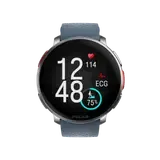 Polar Vantage V3
Polar Vantage V3
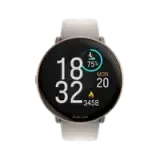 Polar Ignite 3
Polar Ignite 3
 Polar Ignite 3 Braided Yarn
Polar Ignite 3 Braided Yarn
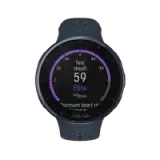 Polar Pacer Pro
Polar Pacer Pro
 Polar Pacer
Polar Pacer
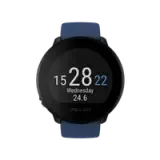 Polar Unite
Grit X Series
Vantage Series
Pacer Series
Ignite Series
Polar Unite
Grit X Series
Vantage Series
Pacer Series
Ignite Series
